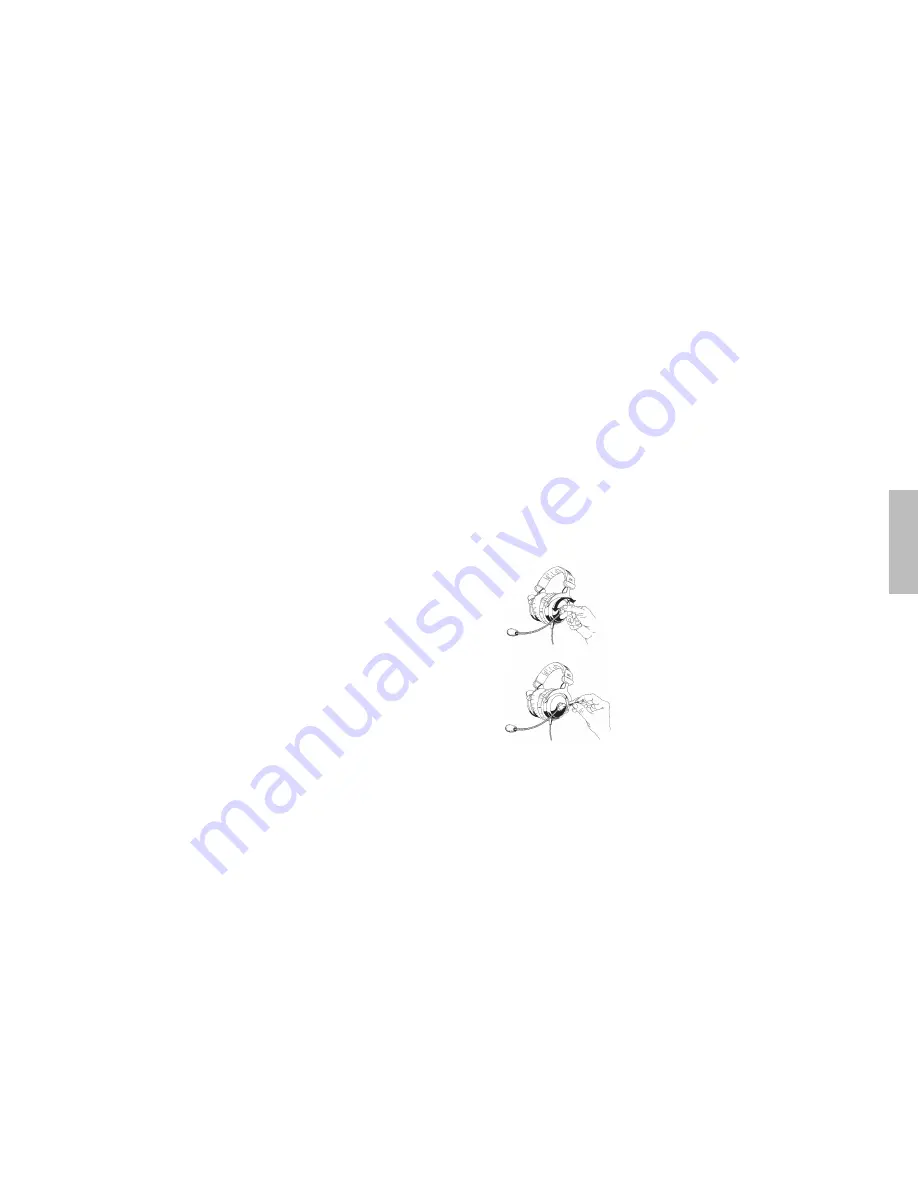
english
14 | 15
Thank you for selecting the HS 200 aviation headset. Please take some time to
read carefully through this product information before using the headset.
1.
Safety Information
When using the HS 200 headset, typical aircraft sounds (e.g. those from engines,
propellers, warning alarms etc.) may sound different to you. Before operating the
aircraft, please make sure that you can hear and recognise these sounds. Set the
volume to safe levels that do not interfere with your ability to hear important
sounds and warning alarms.
2.
Applications
The HS 200 is an aviation headset which has a closed design to meet high
standards.
3.
Usage
3.1
How to store and maintain the HS 200
It is best to store the headset in the supplied padded bag. While storing the head-
set make sure that it is not exposed to extreme temperatures, humidity or direct
sunlight. Use a soft cloth when cleaning the HS 200. Do not immerse the headset
in water.
3.2
How to connect the Headset
3.2.1
HS 200 Trend
Connect the 1/4" jack plug for the headphones and the PJ-068 jack plug for the
microphone to the appropriate jack sockets of your intercom.
3.2.2
HS 200 Rotor
Connect the U-174/U jack plug to the appropriate jack sockets of your intercom.
3.3
How to prepare the Headset for Use
3.3.1
Adjusting the Headband
For best comfort and noise attenuation, the headband has to be adjusted to fit your
head properly.
Wear the headset so that the headband runs over the top of your head and adjust
the headband so that
• your ears are completely enclosed by the ear cushions,
• you feel a gentle pressure around your ears,
• both ends of the headband have the same length to ensure a proper fit.
3.3.2
Adjusting the Microphone
• Turn the microphone holder (not the gooseneck!) to
position the microphone on the left or right hand
side of the mouth.
• Adjust the gain of the microphone by using a small
screwdriver. Turn the control to the right to increase
the gain or to the left to reduce the gain.































